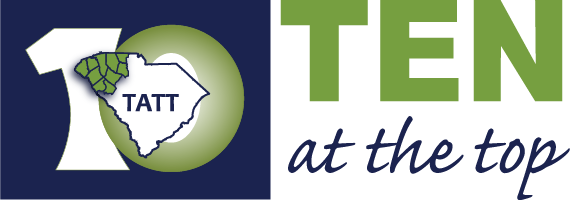By Dean Hybl, Executive Director, Ten at the Top
Imagine a scenario where for significant parts of the year your family was unable to spend extended time outside enjoying parks, lakes and mountains like those we are blessed with here in the Upstate because the air was unsafe to breathe.
Sound like something that could never happen here?
Well, the reality is that prior to the passage of the Clean Air Act in 1970 there were many places across the entire United States where air pollution was at levels that made it difficult for people to safely spend extended periods outside.
The Environmental Protection Agency (EPA) estimates that since 1970 the national emissions for the six primary air pollutants have declined by more than 70%. The EPA also estimates that because of the Clean Air Act more than 200,000 early deaths have been annually prevented in the U.S. and that the number of asthmatic episodes, cases of acute bronchitis and hospitalization due to breathing problems have been significantly reduced.
However, even with all the strides that have been made, air pollutants can still negatively impact the public health. A new study conducted by researchers from the Washington University School of Medicine in St. Louis estimated that air pollutants play a role in more than 3.2 million new cases of diabetes annually (150,000 in the United States). Here in the Upstate, the American Lung Association (ALA) reports that there are more than 110,000 people in the region living with some form of Asthma, a number that has declined slightly in recent years, but still represents roughly 7.5% of Upstate residents.
Because the Upstate is a manufacturing-focused economy, staying within EPA attainment levels is critical not just to the physical health of our residents, but also to the economic well-being of our region. If the Upstate were labeled a non-attainment area for air pollutants, the additional costs to our manufacturers would likely negatively impact their willingness to invest (or reinvest) in our region.
Thanks in a large part to collaborative efforts by local governments, businesses and community organizations, our region has seen a significant reduction over the last two decades in overall air pollutant levels.
Once annually within risk of being recognized as a non-attainment area by EPA and regularly receiving poor grades in the ALA’s annual ratings, the Upstate has seen a positive impact from a combination of primarily voluntary actions to reduce emission levels.
When the most recent EPA ozone emission standards were announced in 2015, it marked the first time that the Upstate did not need any mitigation to ensure staying within attainment levels. In addition, the 2018 ALA air quality rankings gave every Upstate county an A or B for ozone emission levels (compared to primarily C and D ratings in 2012).
Another component that has played an important role in reducing our air pollutants has been the continuing evolution of technology. The elimination of coal-fired electric plants in the region, the continued improvements in tail pipe emissions for vehicles and numerous other technology innovations have been critical to the reduction of air pollutants in the Upstate.
Over the last several years, the Upstate Air Quality Advisory Committee, which includes local governments, businesses and non-profit organizations, has spearheaded the Clean Air Upstate campaign to help grow awareness of things that can be done by individuals, local governments and businesses to make our air cleaner and safer for everyone.
On August 17th, the Air Quality Advisory Committee, Ten at the Top and presenting sponsor Bon Secours St. Francis Health System will be hosting a regional workshop called A Cleaner Future: Air Quality, Sustainability and Energy Innovation. The workshop will be held from 10 a.m. until 2 p.m. at the T.D. Convention Center.
This informative and interactive workshop will feature keynote discussions and breakout sessions focused around innovations that are helping to improve air quality while in many cases also providing financial benefits for an individual, business or local government. After an opening session, attendees will self-select into the breakout sessions that best fit their interest: Home, Car/Travel or Business (each breakout session will be held twice to provide an opportunity to attend the two sessions of greatest interest). The workshop will conclude with lunch and a keynote program.
If you are interested in learning more about how you can help continue to make the air we breathe in the Upstate safer through the use of emerging and innovative technologies, I hope you will plan to join us on August 17th.
For more details and to register for A Cleaner Future: Air Quality, Sustainability and Energy Innovation Workshop, please go to our website at www.tenatthetop.org.
